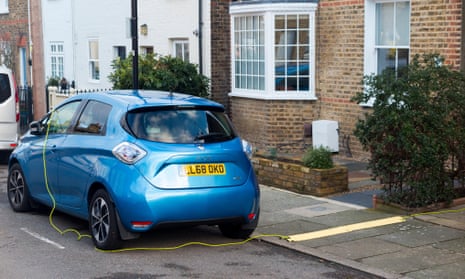Discover the Ultimate Tricks: How Do You Know If a 12-Volt Battery is Good Or Bad
To check if a 12-volt battery is good or bad, use a multimeter to measure its voltage output. Understanding The Importance Of A Healthy Battery In order to ensure your vehicle operates smoothly and efficiently, it is crucial to have a well-functioning battery. A 12-volt battery plays a vital role in powering the electrical systems of your vehicle, including the ignition, lights, radio, and many other components. Understanding the importance of a healthy battery is essential for maintaining the overall performance of your vehicle. Why Is A Well-functioning Battery Crucial For Your Vehicle? A well-functioning battery is the lifeblood of your vehicle’s electrical systems. It is responsible for providing the necessary power to start the engine and keep it running smoothly. Without a healthy battery, your vehicle may struggle to start, or it may not start at all. This can be a frustrating experience, especially when you rely on your vehicle for your daily commute or other essential activities. Moreover, a healthy battery ensures that all the electrical systems in your vehicle operate effectively. From powering the headlights and taillights to operating the air conditioning and audio system, a well-functioning battery is crucial for the overall functionality and comfort of your vehicle. Additionally, a healthy battery is necessary for your vehicle’s charging system to function optimally. The battery works hand in hand with the alternator to recharge the battery while the engine is running. If your battery is faulty or weak, it may not be able to hold or receive a charge effectively, which can lead to a drained battery and potential electrical issues in your vehicle. The Role Of A 12-volt Battery In Powering The Electrical Systems Of A Vehicle The 12-volt battery is the heart of your vehicle’s electrical systems. It provides the initial power needed to start the engine, ignites the spark plugs, and supplies the necessary energy to various electrical components. From the moment you turn the ignition key, the battery springs into action, providing the electrical current required to crank the engine into life. Once the engine is running, the battery continues to supply power to the electrical system. It ensures that the lights, both inside and outside the vehicle, function properly. Additionally, the battery powers the audio system, enabling you to enjoy your favorite music on long drives. It also supports the operation of essential components such as the air conditioning, power windows, and navigation systems, enhancing your overall driving experience. In conclusion, a healthy 12-volt battery is crucial for your vehicle’s performance and functionality. It not only ensures a reliable start but also powers the various electrical systems that contribute to your driving comfort. Regular battery maintenance and replacement, when necessary, can help you avoid potential issues and keep your vehicle in top shape. Credit: www.motortrend.com Signs Of A Good 12-volt Battery A 12-volt battery is an essential component in any vehicle’s electrical system. It powers the ignition, lights, and other electrical accessories. To ensure your vehicle starts reliably and all electrical systems function properly, it’s crucial to know how to determine if your 12-volt battery is in good condition. In this article, we’ll explore the signs of a good battery, which include cranking power, consistent electrical output, and proper voltage level. Cranking Power: How To Check If Your Battery Has Sufficient Power To Start The Engine One of the first signs of a good 12-volt battery is its cranking power. This refers to the battery’s ability to provide enough power to start the engine. To check the cranking power of your battery, follow these steps: Ensure the vehicle is turned off and in park or neutral. Disconnect any accessories that may drain the battery, such as headlights or the radio. Connect a voltmeter to the battery terminals, with the red probe on the positive terminal and the black probe on the negative terminal. Have an assistant turn the key to start the engine while you observe the voltmeter. A voltage reading of at least 9.6 volts indicates the battery has sufficient cranking power. Consistent Electrical Output: What To Look For To Ensure The Battery Provides A Steady Supply Of Electricity In addition to cranking power, a good 12-volt battery should also provide a consistent electrical output. This means it should deliver a steady supply of electricity to power the various electrical components of your vehicle. To assess the battery’s electrical output, consider the following: Check for any dimming of lights or flickering of electrical systems while the engine is running. These may indicate a fluctuating electrical output. Listen for any unusual sounds from the engine or electrical systems, as inconsistent electrical output could lead to mechanical or electrical issues. Inspect the battery terminals for corrosion or loose connections, as these can interfere with the smooth flow of electricity. Proper Voltage Level: Measuring The Voltage To Assess The Battery’s Health Measuring the voltage of a 12-volt battery is an effective way to assess its health and determine if it is in good condition. Here’s how you can measure the voltage: Step 1: Make sure the vehicle is turned off and in park or neutral. Step 2: Set your multimeter to DC voltage and the appropriate range, typically 0-20 volts. Step 3: Connect the multimeter’s positive probe to the positive terminal of the battery and the negative probe to the negative terminal. Step 4: Read the voltage displayed on the multimeter. A reading between 12.4 and 12.7 volts indicates a fully charged battery with good health. Remember to take the voltage measurement when the battery is not being charged or discharged to get an accurate reading. Common Indicators Of A Faulty 12-volt Battery A 12-volt battery is the lifeblood of a vehicle, providing the necessary electrical energy to power various components. However, like any other mechanical system, a battery can experience problems over time. Identifying the signs of a faulty battery is crucial to prevent unexpected breakdowns and ensure smooth operation of your vehicle. In this section, we will explore the common indicators
Discover the Ultimate Tricks: How Do You Know If a 12-Volt Battery is Good Or Bad Read More »




